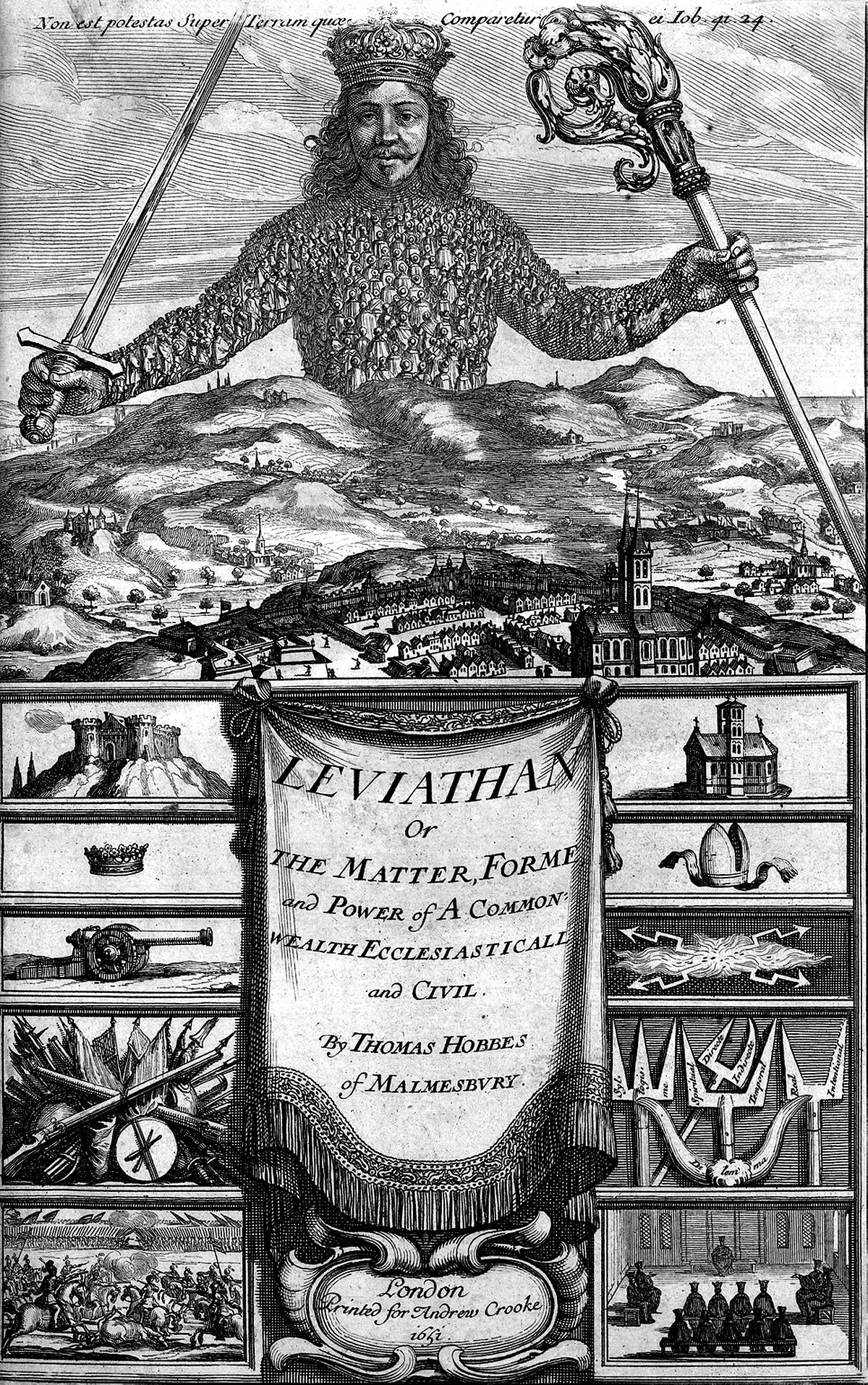Administrative Information
| Title | Social Contract Theories |
| Duration | 60 |
| Module | A |
| Lesson Type | Lecture |
| Focus | Ethical - Ethics Fundamentals |
| Topic | Social Contract Theory |
Keywords
Social Contract,Hobbes,Moral anti-realism,
Learning Goals
- Learner understands moral anti-realism.
- Learner understands social contract theory
Expected Preparation
Learning Events to be Completed Before
Obligatory for Students
None.
Optional for Students
None.
References and background for students
None.
Recommended for Teachers
- Gensler, H. J. (2017). Ethics: A contemporary introduction. Routledge. CH 9.7 GR and Hobbes
- T. H. Irwin. Nature, law, and natural law. In Roger Crisp (ed.), The Oxford Handbook of the History of Ethics. Oxford University Press. pp. 206 (2013)
- The Stanford Encyclopedia of Philosophy on Hobbes: [1]
Lesson materials
Instructions for Teachers

Thomas Hobbes' Leviathan from 1651
Social contract theories can be initiated with the story of Thomas Hobbes and the Leviathan. This requires the understanding of the historical context and some reasons behind the gradual loss of appeal of religious ethics for the intellectual elite.
- Explain the West-European world in the mid-17th centuries (hint: brutal civil sectarian wars, unrest, plague and famine) (5 min)
- Introduce anarchy Thomas Hobbes believes humanity exhibit without order (life outside society would be ‘solitary, poor, nasty, brutish, and short’) (5 min)
- Introduce the core concepts of the state, why is it like a Leviathan? (10 min)
- Discuss why is it that the Leviathan represents a form of moral anti-realism (5 min)
- Explain that unlike with the dominant religious ethics, this system is more dynamic as it is socially constructed (5 min)
- Discuss the fact that this state is not necessarily completely fair and just (15 min)
- Discuss that the social contracts does not have every individual's consent (15 min)
Acknowledgements
The Human-Centered AI Masters programme was Co-Financed by the Connecting Europe Facility of the European Union Under Grant №CEF-TC-2020-1 Digital Skills 2020-EU-IA-0068.
